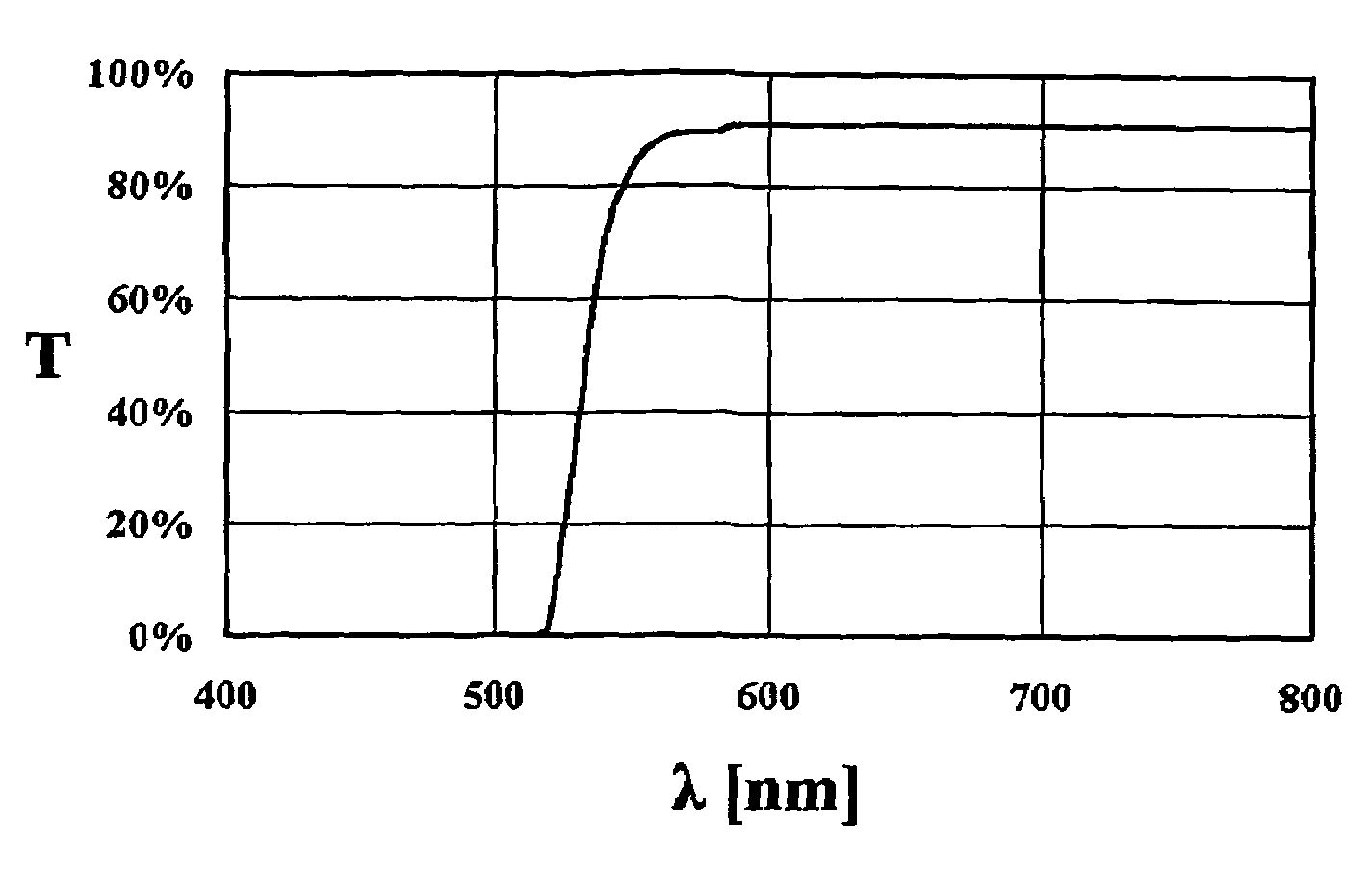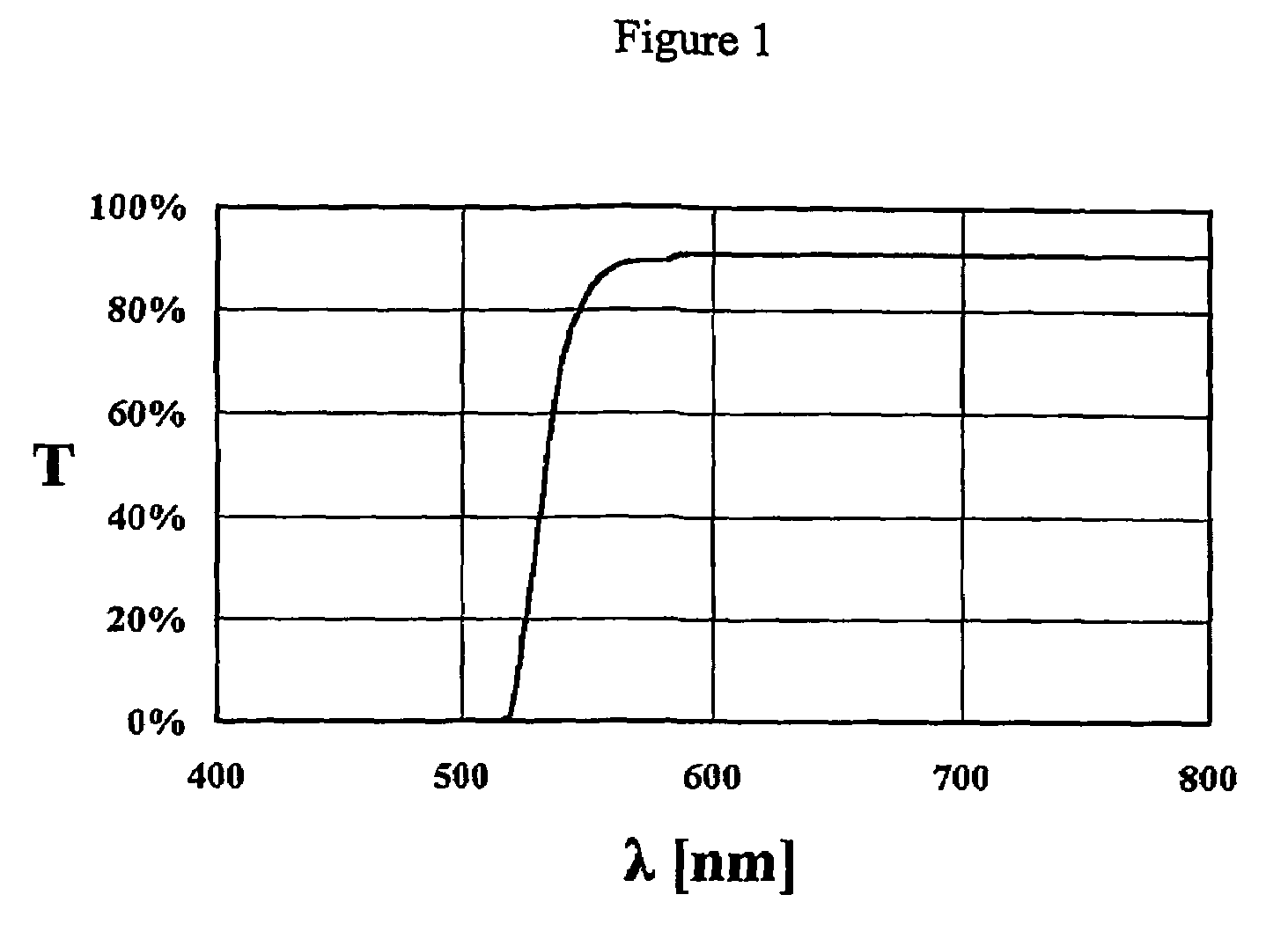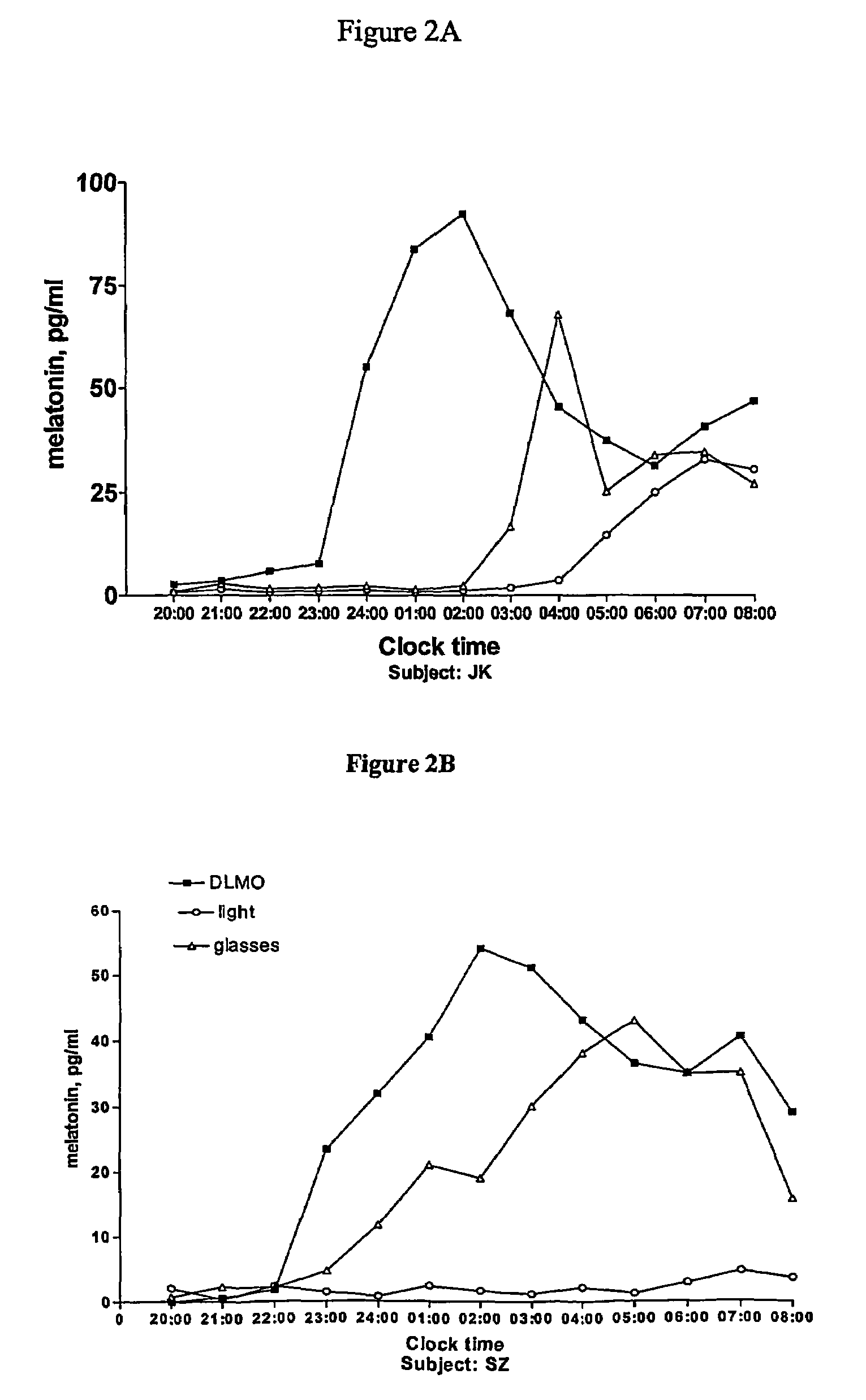Device for the prevention of melationin suppression by light at night
a technology of melatonin suppression and light at night, which is applied in the direction of sleep inducing/ending devices, sensors, diagnostics, etc., can solve the problems of breast cancer risk, increased risk among subjects with the brightest bedrooms, and harmful effects of light at night on the health of both animals and humans, so as to prevent melatonin suppression
- Summary
- Abstract
- Description
- Claims
- Application Information
AI Technical Summary
Benefits of technology
Problems solved by technology
Method used
Image
Examples
example 1
[0042]A study was undertaken to measure the impact on melatonin production of one type of yellow lens. A yellow filter lens was provided that allowed selective exclusion of all wavelengths below 530 nm while maintaining relatively good color recognition and a visual light transmittance in daylight of approximately 63% and a visual light transmittance in nightlight of approximately 73%. FIG. 1 illustrates the technical characteristics of the lenses having an edge at + / −530 nm, and above 530 nm filters out approximately 8% of longer wavelengths.
[0043]In the study a total of 6 healthy young males and 2 healthy young females (mean age 22.5±1.5) participated. The inclusion and exclusion criteria for this study were implemented to discourage biased data resulting from external factors. All subjects underwent a psychiatric and sleep assessment to rule out significant psychopathology and sleep disruption. All subjects scored less than 7 on the Epworth Sleepiness Scale as described in Johns,...
PUM
 Login to View More
Login to View More Abstract
Description
Claims
Application Information
 Login to View More
Login to View More - R&D
- Intellectual Property
- Life Sciences
- Materials
- Tech Scout
- Unparalleled Data Quality
- Higher Quality Content
- 60% Fewer Hallucinations
Browse by: Latest US Patents, China's latest patents, Technical Efficacy Thesaurus, Application Domain, Technology Topic, Popular Technical Reports.
© 2025 PatSnap. All rights reserved.Legal|Privacy policy|Modern Slavery Act Transparency Statement|Sitemap|About US| Contact US: help@patsnap.com



